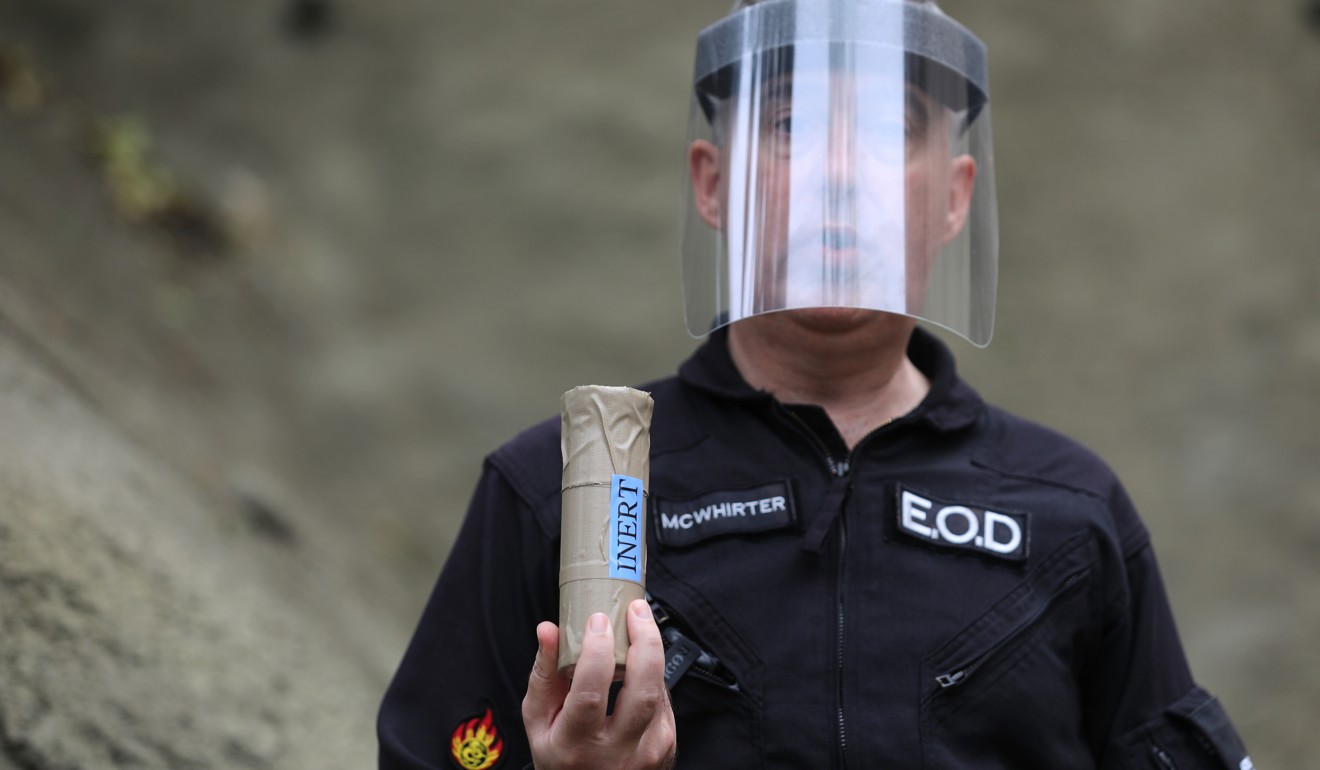Year of living dangerously: Hong Kong bombing campaign ‘almost unprecedented’, says police explosives unit
- Bulk of city’s 190 explosives cases came between June and January, as protests over the now-abandoned extradition bill grew increasingly violent
- A demonstration for media showed how the compound RDX could rip through furniture and tear a dummy into shreds

Hong Kong police handled nearly 190 explosives cases in 2019 – 60 per cent more than the year before – amid what they called an “almost unprecedented” bombing campaign.
The city’s Explosive Ordnance Disposal Bureau revealed the latest figures on Friday while showing just how much damage some of the explosives they have seized can cause.
“We’ve been dealing over the last few months with an ongoing bombing campaign [that is] almost unprecedented in Hong Kong,” senior bomb disposal officer Alick McWhirter said.
According to McWhirter, the force dealt with 187 explosives cases in 2019, up from 116 the year before.
The bulk of those, 162, came between June and January during a period of often violent social unrest that evolved from protests over the now-scrapped extradition bill. The same eight-month period also saw 52 bomb hoax reports.
More recent bomb plots, police said, came as residents protested the Hong Kong government’s response to containing the coronavirus outbreak.
In early March, authorities seized more than two tonnes of explosives and chemicals and arrested 17 people, accusing the group of plotting attacks against police officers.
While today’s devices are increasingly more sophisticated, the city’s most devastating bombing campaign remains the 1967 riots, which saw police deal with more than 1,100 bombs and countless hoax devices amid violence that left 51 civilians and officers dead.
In Friday’s demonstration, two separate doses of RDX, a popular bomb-making compound, ripped through furniture and tore a dummy into shreds, blowing out the windows of 150-square-foot rooms.
It did not involve material seized from suspects, but were fashioned to recreate the sense of impact, Chin Chiu Suryanto, an officer in the bureau, said.
“It’s similar to threats in other countries,” he added.

Materials for making home-made explosives that have been seized in the past year include triacetone peroxide, a highly unstable substance often referred to as TATP, that can be got hold of in Hong Kong “with difficulty”, according to McWhirter.
The white crystalline powder is the same material used in suicide bombing attacks in Manchester in 2017 and Brussels in 2016.
ThePost reported earlier this week that Hong Kong police could potentially invoke international anti-terrorism legislation in a bid to have local bomb-makers designated as terrorists, which would make them eligible for potential life sentences.
“Anytime we go somewhere, it’s a surprise to us,” McWhirter, who has been with the disposal team since 1996, said of the calls his unit is sent on.
“Certainly [the attacks are] starting to bear all the hallmarks of home-grown terrorism.”